Clinical and patient reported outcomes after treatment of Rotator Cuff Tears: A Retrospective, Observational Study
2 Senior Resident, Sunrise Hospitals, Seaport Airport Road, Kochi, Kerala, India
3 Chief Medical Officer, Healthium Medtech Limited, Ambedkar Colony, Yelahanka, Bengaluru, Karnataka, India
4 Deputy General Manager-Clinical Affairs, Healthium Medtech Limited, Ambedkar Colony, Yelahanka, Bengaluru, Karnataka, India, Email: deepak.ts@healthiummedtech.com
Received: 31-Mar-2023, Manuscript No. jotsrr-23-93796; Editor assigned: 01-Apr-2023, Pre QC No. jotsrr-23-93796 (PQ); Accepted Date: Apr 12, 2023 ; Reviewed: 07-Apr-2023 QC No. jotsrr-23-93796 (Q); Revised: 10-Apr-2023, Manuscript No. jotsrr-23-93796 (R); Published: 15-Apr-2023
This open-access article is distributed under the terms of the Creative Commons Attribution Non-Commercial License (CC BY-NC) (http://creativecommons.org/licenses/by-nc/4.0/), which permits reuse, distribution and reproduction of the article, provided that the original work is properly cited and the reuse is restricted to noncommercial purposes. For commercial reuse, contact reprints@pulsus.com
Abstract
Background: There is very less data available about post-operative outcomes after arthroscopic Rotator Cuff Tear (RCT) surgery in Indian population. Our study was aimed to collect the real-world postoperative data of rotator cuff tear repairs using Sironix knotted and knotless suture anchors.
Methods: This study was planned to collect the retrospective data of all subjects who underwent arthroscopic RCT surgery between April 2018 and June 2022. All patients were consented telephonically. Demographics, surgery details and other baseline characteristics were collected from the patient medical records. Primary objective of the study was to assess the repair failure rate. Secondary objectives were to assess the patient reported outcomes using PENN Shoulder Score (PSS), Quick - Disabilities of Arm, Shoulder, and Hand (DASH) and Single Assessment Numeric Evaluation (SANE) questionnaires. Adverse device effects and surgery-related adverse events information were collected.
Results: A total of 54 subjects were enrolled in the study. The mean (SD) age was 58.7 (± 9.8) years. Mean (SD) total duration of follow-up was 13.5 ( ± 4.3) months. Of all the enrolled subjects, 34 (63%) had undergone arthroscopic cuff repair with acromioplasty of right shoulder. There were no repair failures observed in this study. Mean (SD) of total PENN shoulder score was 94.6 (± 6.9). Mean (SD) of Quick-DASH total score reported was 11.6 (± 1.6). The mean (SD) score for SANE questionnaire observed for both the injured and non-injured shoulders of patients was 95 (± 6.7). No adverse device effects were reported.
Conclusion: Current study devices appear to be a safe and effective approach in RCT surgeries providing acceptable post-operative recovery with no repair failures and agreeable functional improvement. Larger cohort prospective studies are required for further evaluation.
Keywords
Suture anchor, Rotator cuff tear, Arthroscopy, Outcomes
Introduction
Rotator Cuff Tears (RCT) are among the most common conditions affecting the shoulder joint. There is an age-dependent increase in incidence of rotator cuff tears and the prevalence of full thickness rotator cuff tears range from 7% to 40% [1]. India, with its 1.3 billion population, represents a potential caseload of Rotator Cuff (RC) tears in the millions. Globally there is a RC tear prevalence of approximately 40% in asymptomatic individuals which increases to about 65% in symptomatic individuals [2]. Rotator cuff tears represent one of the most frequent pathological conditions of the shoulder, with a higher incidence in patients over 50 years and a progressive pattern in most of the cases [3].
Rotator cuff tears can lead to a variety of clinical manifestations, including debilitating shoulder dysfunction and impairment. The goal of Rotator Cuff Repair (RCR) is to eliminate pain and improve function with increased shoulder strength and Range of Motion (ROM). Tears of the supraspinatus tendon extending into infraspinatus and subscapularis tendons can result in shoulder instability due to loss of balance between anterior and posterior cuff muscles [4, 5]. Arthroscopic treatment of rotator cuff tears has become a routine procedure as the trend towards minimally invasive surgery continues [6].
With the development and promotion of arthroscopy, arthroscopic repair of the shoulder has become the main treatment for rotator cuff injuries, owning to the advantages of small surgical trauma, low postoperative adhesion risk, low infection probability, and easy early rehabilitation after surgery [7]. Combined use of acromioplasty and arthroscopic rotator cuff repair helps to promote the joint function recovery and alleviate the pain of the patients [8]. When performing arthroscopic rotator cuff repair, the indications for surgery becomes paramount important. The concept of chronic and traumatic cuff tear should be recognized, and the Acromio-Humeral Distance (AHD) needs to be taken into consideration for appropriate surgical indication [9]. Arthroscopic rotator cuff repair commonly utilizes suture anchorbased constructs for tendon fixation to bone [10].
Shoulders of Indian population are different from those of Western population, both anatomically and morphologically. Despite this, the uptake of shoulder surgery in India has been extremely slow, due to various factors such as lack of patient education, lack of infrastructure in hospitals and lack of shoulder specific training [11]. To assess the outcomes related to functionality after arthroscopic rotator cuff surgery many studies have used the standardized questionnaires like PSS, Quick-DASH and SANE scores [12-14]. Also, there is a paucity of data on arthroscopic RCT surgery outcomes in Indian population. The objective of this study was to assess the clinical and functional outcomes with the use of such questionnaires from the present real- world data after rotator cuff repairs.
DEVICE DESCRIPTION
Sironix Ceptre® Knotted UHMWPE suture PEEK anchor: CEPTRE® Knotted Ultra-High Molecular Weight Polyethylene suture (UHMWPE) Polyether Ether Ketone (PEEK) anchor is intended for soft tissue fixation to the bone. These are double or triple-loaded with suture(s)/tape(s) to provide the best possible combination for superior repair strength (Fig. 1).
Sironix Viplok® Knotless PEEK anchor: This is a versatile knotless anchor made up of PEEK comes preloaded on an inserter assembly. These are capable of taking multiple (4-6) sutures/tapes from the tip eyelets. These anchors are available in wedge & screw designs. (Fig. 2)
Materials and Methods
STUDY DESIGN
This was a retrospective data collection study to assess the clinical and patient-reported outcomes after treatment of rotator cuff tears. All the enrolled patients were consented before the telephonic interview for the study purpose. Data of patients who underwent rotator cuff tear surgery using suture anchors between April 2018 and June 2022 was collected from the medical records. During the telephonic interview, the patients were enquired about demographic details, medical and surgical history details, rotator cuff surgery details. Primary outcome in this study is repair failure rate, defined as the need for a second repair procedure for the rotator cuff after surgery was enquired telephonically. Secondary outcomes were obtained using PENN Shoulder Score (PSS), Quick- DASH (Disabilities of Arm, Shoulder, and Hand) Score, Single Assessment Numeric Evaluation score (SANE) as patient reported outcome data points. Adverse device effects and surgery related adverse events information was gathered telephonically along with medication details.
This clinical investigation was conducted in compliance with the ICH GCP E6 R2 2016 (Step 4), Guidance for Good Clinical Practices (GCP), New Drugs and Clinical Trials 2019, Medical Devices Rules (MDR17 & Amendment Rules, 2020), Declaration of Helsinki (Taipei 2016) and ISO 14155-2020. The CTRI registration number for this study is CTRI/2022/11/047427.
Male/female patients aged ≥ 18 years and ≤ 80 years at the time of surgery, patients who had undergone surgery with Sironix suture anchor devices with a minimum of 6 months of follow-up and patients who were willing to provide written informed consent (in case of a physical visit to the site) or verbal informed consent (in case of a telephonic visit) were included in the study. Patients who were diagnosed with other serious shoulder injury that can cause shoulder pain (tumor of shoulder, acute fracture, and dislocation of shoulder) and patients who were not willing to attend the follow-up were excluded from the study.
Interpretation of Scores: PENN shoulder score is a condition-specific self-report 100-point scale that consists of 3 subscales, including pain, satisfaction, and function. All are based on a 10-point numeric rating scale with endpoints and points are awarded for each item by subtracting the number circled from the maximum of 10. The total PSS maximum score of 100 indicates the high function, low pain, and high satisfaction with the function of the shoulder.
Quick DASH is an 11-item questionnaire that measures an individual’s ability to complete tasks, absorb forces, and severity of symptoms. This tool uses a 5-point likert scale from which the patient can select an appropriate number corresponding to his/her severity/function level. The lesser the value is, the less difficulty.
SANE score is a single-question outcome measure that evaluates the patient’s sense of functional improvement on a scale of 0% to 100% scale with 100% being normal, pertaining to the shoulder which had rotator cuff repair in this study.
Statistical Methods
Demographic measurements, medical history and surgery details were summarized descriptively. The primary endpoint of this study, repair failure rate was summarized descriptively. Secondary endpoints of this study were patient reported outcomes (Penn Shoulder score, Quick DASH, SANE) were summarized as n, mean, median, standard deviation, minimum and maximum. The adverse device effects (if any) were summarized as the number and percentage of the subjects with adverse events as well as the number of events.
Results
In this study, 55 subjects were screened out of which 54 subjects were found to be eligible as per the inclusion/exclusion criteria of the study. The disposition of patients in this study was summarized in Fig. 3.
Demography and surgery details were summarized in Table 1. The mean (SD) age was 58.7 (± 9.8) years. The number of female patients was 31 (57.4%) and male patients was 23 (42.6%). Majority of the patients {34 (63%)} had undergone arthroscopic cuff repair with acromioplasty of right shoulder followed by patients {14 (25.9%)} with arthroscopic cuff repair with acromioplasty of left shoulder. Total mean (SD) duration of follow-up was 13.5 (± 4.3) months.
Table 1. Demographics and other baseline characteristics
| Demographic Characteristics | Overall (N=54) |
|---|---|
| Age (years) | |
| N | 54 |
| Mean | 58.72 |
| SD | 9.8 |
| Median | 58.5 |
| Min; Max | (28.00, 81.00) |
| Gender, n (%) | |
| Female | 31 (57.4) |
| Male | 23 (42.6) |
| Race, n (%) | |
| Asian | 54 (100.0) |
| Medical/Surgical History, n (%) | Overall (n = 54) |
| Arthroscopic Rotator Cuff Repair + Acromioplasty Right Shoulder | 34 (63.0%) |
| Arthroscopic Rotator Cuff Repair + Acromioplasty Left Shoulder | 14 (25.9%) |
| Arthroscopic Cuff Repair + Capsular release + Acromioplasty Right shoulder | 2 (3.7%) |
| Arthroscopic Cuff Repair + Acromioplasty + ACJ Resection Left Shoulder | 1 (1.9%) |
| Arthroscopic Cuff Repair + Acromioplasty + Capsular release Left shoulder | 1 (1.9%) |
| Arthroscopic cuff repair + Subscapularis repair + Capsular release Right shoulder | 1 (1.9%) |
| Arthroscopic cuff repair + Subscapularis repair + Capsular release Right shoulder | 1 (1.9%) |
*E - Number of events; SD – Standard Deviation; ACJ – Acromioclavicular Joint |
|
Out of 54 enrolled patients, 51 (94.4%) received Ceptre® knotted UHMWPE suture PEEK anchors (Ceptre® 5.5 mm anchors in 50 patients and Ceptre® 4.8 mm in 1 patient) and 26 (48.1%) patients got Viplok® knotless PEEK anchors (anchors with titanium tip in 21 patients and anchors with PEEK tip in 5 patients) (Fig. 4).
There were no repair failures observed in this study. Summary of all the cores were represented in Table 2. Mean (SD) of total PENN shoulder score of all enrolled patients was 94.6(± 6.9). With respect to the subscales, mean (SD) score was 28.5 (± 3.06), 9.2 (± 1.2) and 56.8 (± 3.2) for pain, satisfaction, and function score respectively. The mean (SD) total Quick-DASH score reported was 11.6 (± 1.6) in all the enrolled patients, with 1.24 being the highest mean score value recorded for any individual question. The mean (SD) score for SANE questionnaire observed for both the injured and non-injured shoulders of patients enrolled in this study was 95 (± 6.7).
Table 2. Association of PSS, Quick-DASH, Scores with type of implant and duration of follow-up
| Type of the Implant | Number of patients, n | Mean PSS Score | Mean Quick-DASH Score | Mean SANE Score |
|---|---|---|---|---|
| Ceptre® Knotted UHMWPE suture PEEK Anchor | 51 (99 implants) | 95.7 | 11.6 | 95 |
| VipLok® Knotless PEEK Anchor-5.5mm Screw with PEEK Tip | 5 (5 implants) | 94.2 | 11.3 | 96 |
| VipLok® Knotless PEEK Anchor-5.5mm Screw with Titanium Tip | 21 (22 implants) | 96.4 | 11.1 | 94 |
| Duration of follow-up | ||||
| 6 months to 1 year | 21 (38.8) | 93.5 | 11.8 | 94 |
| 1 year to 2 years | 32(59.2) | 95.2 | 11.4 | 96 |
| >2 years | 1 (1.8) | 97 | 11 | 97 |
| Mean (SD) of Total duration of follow-up (in months) | 13.5 (4.3) | |||
| *CI - Confidence Interval; PEEK - polyether ether ketone; PSS - Penn Shoulder Score; Quick-DASH - Quick -Disabilities of Arm, Shoulder and Hand; SANE - Single Assessment Numeric Evaluation; UHMWPE - Ultra-high-molecular-weight polyethylene; SD - Standard Deviation | ||||
There was no significant association observed between the PSS, Quick-DASH and SANE scores with respect to type of implant used and duration of follow-up as presented in Table 3.
Table 3. Summary of Total PSS, Quick-DASH and SANE scores
| Total PSS Score | Overall (N=54) |
|---|---|
| N | 54 |
| Mean | 94.65 |
| SD | 6.93 |
| Median | 96 |
| Min; Max | (66.00, 100.00) |
| 95% CI for Mean | (92.76, 96.54) |
| Total Quick-DASH Score | |
| N | 54 |
| Mean | 11.61 |
| SD | 1.61 |
| Median | 11 |
| Min; Max | (11.00, 19.00) |
| 95% CI for Mean | (11.17, 12.05) |
| Total SANE Score | |
| N | 54 |
| Mean | 95.09 |
| SD | 6.7 |
| Median | 98 |
| Min; Max | (70.00, 100.00) |
| 95% CI for Mean | (93.26, 96.92) |
| * CI – Confidence Interval; PSS - Penn Shoulder Score; Quick-DASH - Quick -Disabilities of Arm, Shoulder and Hand; SANE – Single Assessment Numeric Evaluation; SD – Standard Deviation | |
Discussion
The purpose of this study was to evaluate clinical and functional outcomes in terms of repair failure rate and standardized questionnaires. Female patients (57.4%) were slightly higher than the male patients (42.6%). Majority of the patients {34 (63%)} had gone through arthroscopic cuff repair with acromioplasty of right shoulder.
Suture anchor materials with PEEK was introduced as a new suture anchor material with the advantage of being biologically inert and radiolucent [15]. In our study, we have collected the data of RCT surgeries with both knotted and knotless anchors made up of PEEK material which intended for fixation of suture/tape to bone. Based on the patients tear, single to multiple implants were used in each patient. Out of 54 enrolled patients, 51 (94.4%) patients received Ceptre® knotted UHMWPE suture anchors and 26 (48.1%) patients got Viplok® knotless PEEK suture anchors.
There were no repair failures observed in this study indicating good recovery with suture anchors which was similar to the previous studies [16, 17]. The most notable finding was overall excellent functional outcome scores regardless the type of rotator cuff tear. The total mean (SD) PSS score was 94.6 (± 6.9) out of 100 demonstrating highly satisfactory outcomes. Similar findings observed in a study comparing single- row and double-row RCR in which postoperative PSS scores were 91 and 92 respectively [18].
Another retrospective study reported an average of 75.8 PSS score in both partial and full thickness RCT with minimum 5 years of follow-up [19].
Satisfactory Quick-DASH scores reflects improvement in the day-today functions post-surgery. In this study, considerable Quick-DASH scores were reported with mean (SD) total score as 11.6 (± 1.6) out of 55. Comparable results observed in a study of arthroscopic treatment of RCR in patients over 60 years of age provided satisfactory decrease in Quick-DASH score from 52.5 preoperatively to 11.0 at final follow-up [20].
Mean (SD) SANE score of 95 (± 6.7) in our study signifies an excellent functional improvement in comparison of injured shoulder with the non-injured one. Similar improvement in post-operative SANE score (94% ± 10.26) was reported in a study involving elderly patients with arthroscopic repair of traumatic rotator cuff tears [21]. Average SANE score was 91.88 ± 12.30 in another study which reported short term outcomes and return to work rates after arthroscopic RCR [22].
There was no significant difference found in PSS, quick-DASH and SANE scores with regard to the type of suture anchor used and duration of follow-up. There are no adverse device effects reported in the study.
Repair failures are associated with risk factors like age, other comorbidities, tear size, bone mineral density and amount of retraction. As this is a retrospective study, there is insufficient data on risk factors which was the major limitation in this study. This study has some other limitations that include small sample size and lack of radiological assessment which might have confounded the results. This can be the area of future research which can contribute to the orthopaedic literature with a well-designed, prospective, randomized trials to assess the precise outcomes.
Conclusion
Current study devices appear to be a safe and effective approach in providing acceptable post operative recovery in RCT surgeries with no repair failures and agreeable functional improvement. Despite the limitations, our study concludes that RCT surgery with these anchors can reliably improve both shoulder pain and function.
References
- Kumar R, Jadhav U. Functional evaluation of patient after arthroscopic repair of rotator cuff tear. J. Clin. Orthop. Trauma 2014 Jun 1;5(2):84-90.. [Google Scholar]
[Crossref]
- Arora M, Sohan S, Sinha AK. Functional outcomes are improved after rotator cuff repair in the Indian population: A systematic review. J. Arthrosc. Jt. Surg. 2021 Jan 1;8(1):57-63. [Google Scholar] [Crossref]
- Omid R, Lee B. Tendon transfers for irreparable rotator cuff tears. JAAOS-J. Am. Acad. Orthop. Surg. 2013 Aug 1;21(8):492-501. [Google Scholar]
[Crossref]
- Stoller DW: Magnetic resonance imaging in orthopaedics and sports medicine. Philadelphia: Lippincott Williams and Wilkins. 2007; 2(3): 1131-461.
- Morag Y, Jacobson JA, Miller B et al. MR imaging of rotator cuff injury: what the clinician needs to know. Radiographics. 2006 Jul;26(4):1045-65. [Google Scholar]
[Crossref]
- Ghodadra NS, Provencher MT, Verma NN, et al Open, mini-open, and all-arthroscopic rotator cuff repair surgery: indications and implications for rehabilitation. j. orthop. sports phys. ther. 2009 Feb;39(2):81-A6. [Google Scholar]
[Crossref]
- Waterman BR, Newgren J, Gowd AK, et al Randomized trial of arthroscopic rotator cuff with or without acromioplasty: no difference in patient-reported outcomes at long-term follow-up. Arthrosc.: J. Arthrosc. Relat. Surg. 2021 Oct 1;37(10):3072-8. [Google Scholar]
[Crossref]
- He S, Xu H, Liu S. Effect of Arthroscopic Acromioplasty Combined with Rotator Cuff Repair in the Treatment of Aged Patients with Full-Thickness Rotator Cuff Tear and Rotator Cuff Injury. Emerg. Med. Int. 2022 Aug 3;2022. [Google Scholar]
[Crossref]
- Thès A, Hardy P, Bak K. Decision-making in massive rotator cuff tear. Knee Surg. Sports Traumatol. Arthrosc. 2015 Feb;23:449-59. [Google Scholar]
[Crossref]
- Tingart MJ, Apreleva M, Zurakowski D, et al. Pullout strength of suture anchors used in rotator cuff repair. JBJS. 2003 Nov 1;85(11):2190-8. [Google Scholar]
[Crossref]
- Arora M, Sohan S, Sinha AK. Functional outcomes are improved after rotator cuff repair in the Indian population: A systematic review. J. Arthrosc. Jt. Surg. 2021 Jan 1;8(1):57-63. [Google Scholar] [Crossref]
- Carbonel I, Martinez AA, Calvo A, et al Single-row versus double-row arthroscopic repair in the treatment of rotator cuff tears: a prospective randomized clinical study. Int. orthop. 2012 Sep;36:1877-83. [Google Scholar]
[Crossref]
- Lapner PL, Sabri E, Rakhra K, et al. A multicenter randomized controlled trial comparing single-row with double-row fixation in arthroscopic rotator cuff repair. JBJS. 2012 Jul 18;94(14):1249-57. [Google Scholar]
[Crossref]
- Ma HL, Chiang ER, Wu HT, et al Clinical outcome and imaging of arthroscopic single-row and double-row rotator cuff repair: a prospective randomized trial. Arthrosc.: J. Arthrosc. Relat. Surg. 2012 Jan 1;28(1):16-24. [Google Scholar]
[Crossref]
- Kim JH, Kim YS, Park I, et al A comparison of open-construct PEEK suture anchor and non-vented biocomposite suture anchor in arthroscopic rotator cuff repair: A prospective randomized clinical trial. Arthrosc.: J. Arthrosc. Relat. Surg. 2020 Feb 1;36(2):389-96. [Google Scholar]
[Crossref]
- Rhee YG, Cho NS, Parke CS. Arthroscopic rotator cuff repair using modified Mason-Allen medial row stitch: knotless versus knot-tying suture bridge technique. Am. J. Sports Med. 2012 Nov;40(11):2440-7. [Google Scholar]
[Crossref]
- Endo A, Hoogervorst P, Safranek C, et al. Linked double-row equivalent arthroscopic rotator cuff repair leads to significantly improved patient outcomes. Orthop. j. sports med. 2020 Jul 16;8(7). [Google Scholar]
[Crossref]
- Nicholas SJ, Lee SJ, Mullaney MJ, et al. Functional outcomes after double-row versus single-row rotator cuff repair: a prospective randomized trial. Orthop. j. sports med. 2016 Oct 3;4(10). [Google Scholar]
[Crossref]
- Farazdaghi A, Paschos NK, Kelly JD. Comparison between partial and full coverage repair in massive rotator cuff tears. A minimum five year follow-upx. Orthop. Traumatol.: Surg. Res. 2021 Jun 1;107(4):102911. [Google Scholar]
- Bustamante-Suárez de Puga D, Villegas-Robles E, Ortuño-Moreno J, et al Results of arthroscopic treatment of rotator cuff rupture in patients over 60 years of age. Acta ortopédica mexicana. 2020 Feb;34(1):38-42. [Google Scholar]
[Crossref]
- Fares AB, Scanaliato JP, Dunn JC et al Arthroscopic Repair of Traumatic Rotator Cuff Tears in Patients 70 Years and Older. Orthop. J. Sports Med. 2022 Nov 25;10(11). [Google Scholar]
[Crossref]
- Green CK, Scanaliato JP, Dunn JC, et al Rates of return to manual labor after arthroscopic rotator cuff repair. Am. J. Sports Med.. 2022 Jul;50(8):2227-33. [Google Scholar]
[Crossref]

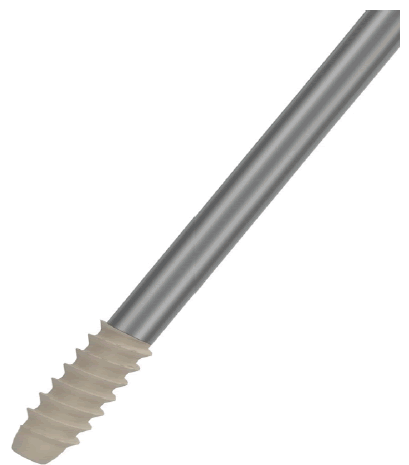
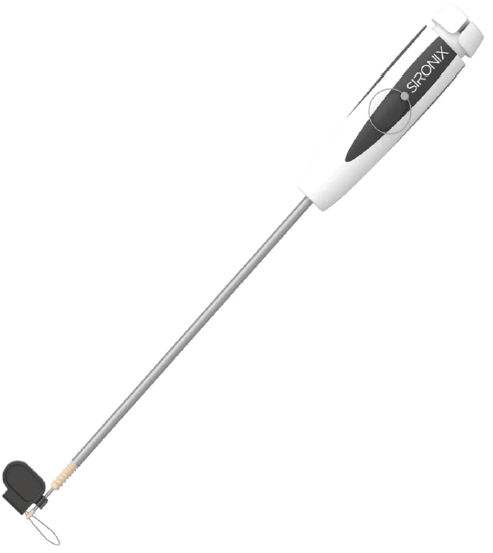
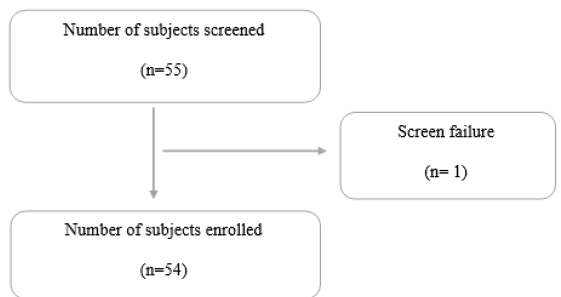
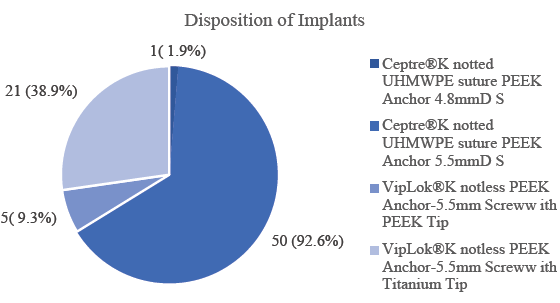
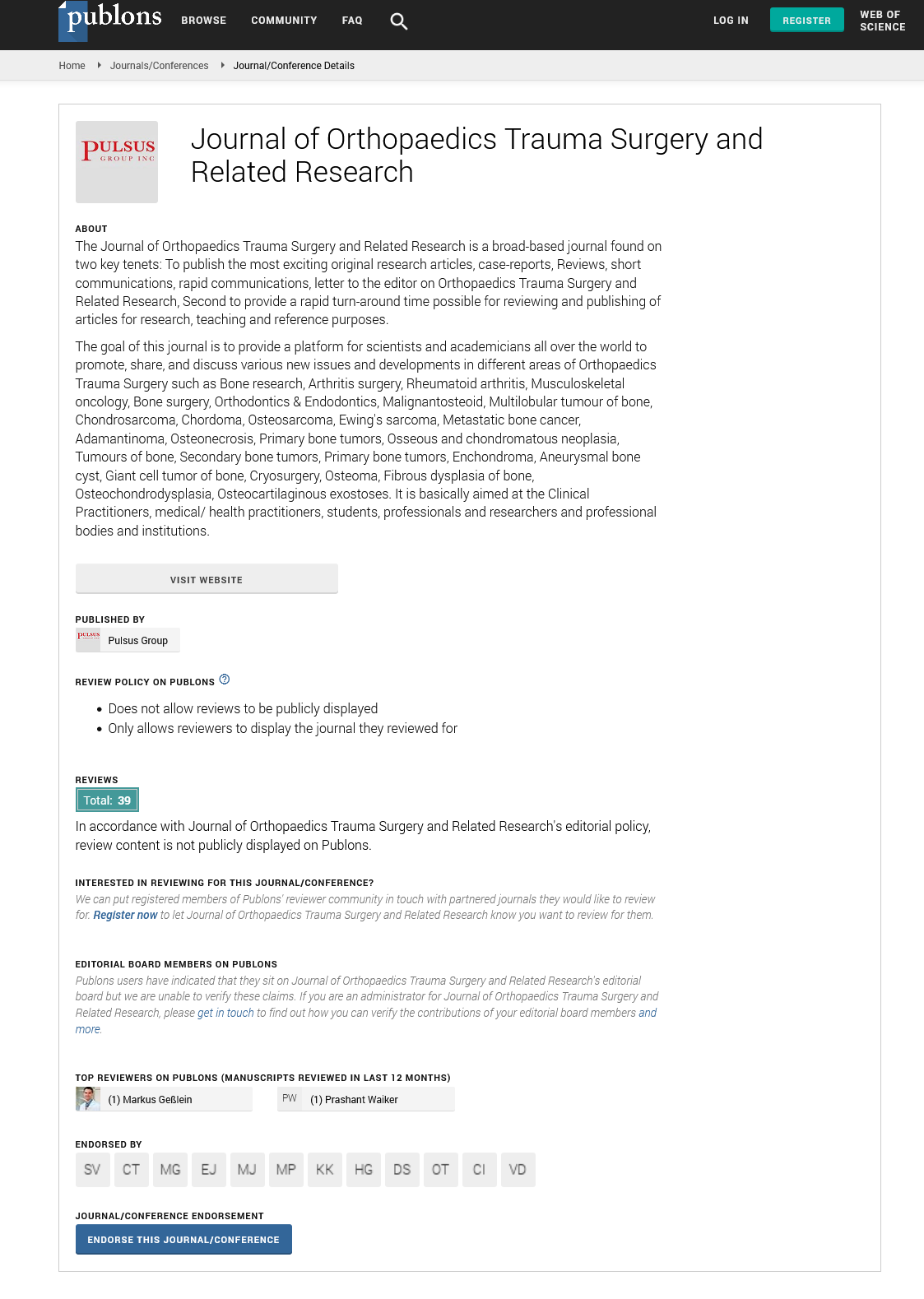

 Journal of Orthopaedics Trauma Surgery and Related Research a publication of Polish Society, is a peer-reviewed online journal with quaterly print on demand compilation of issues published.
Journal of Orthopaedics Trauma Surgery and Related Research a publication of Polish Society, is a peer-reviewed online journal with quaterly print on demand compilation of issues published.